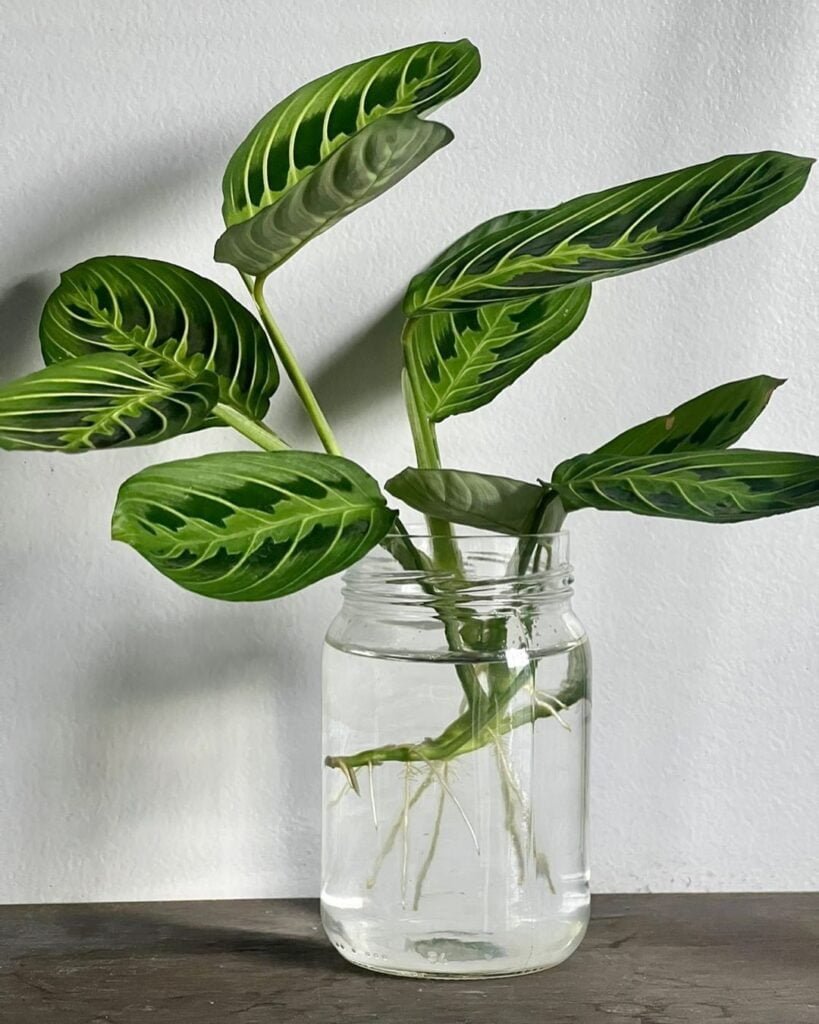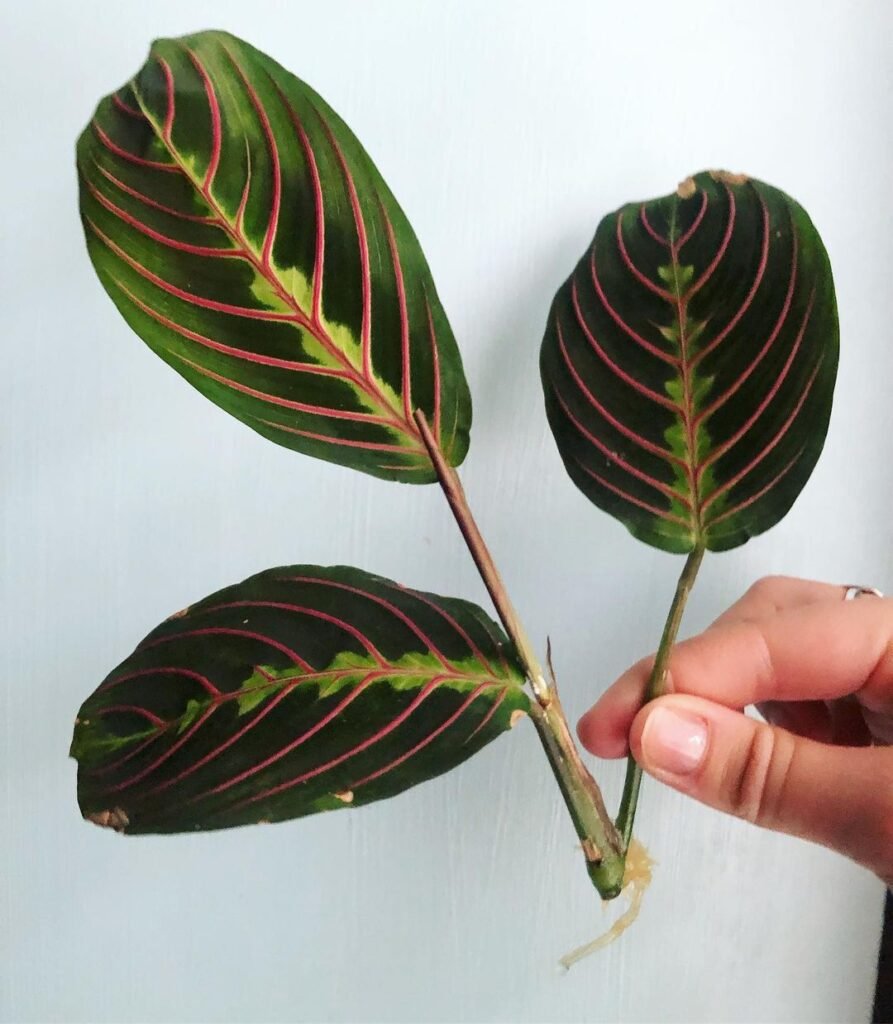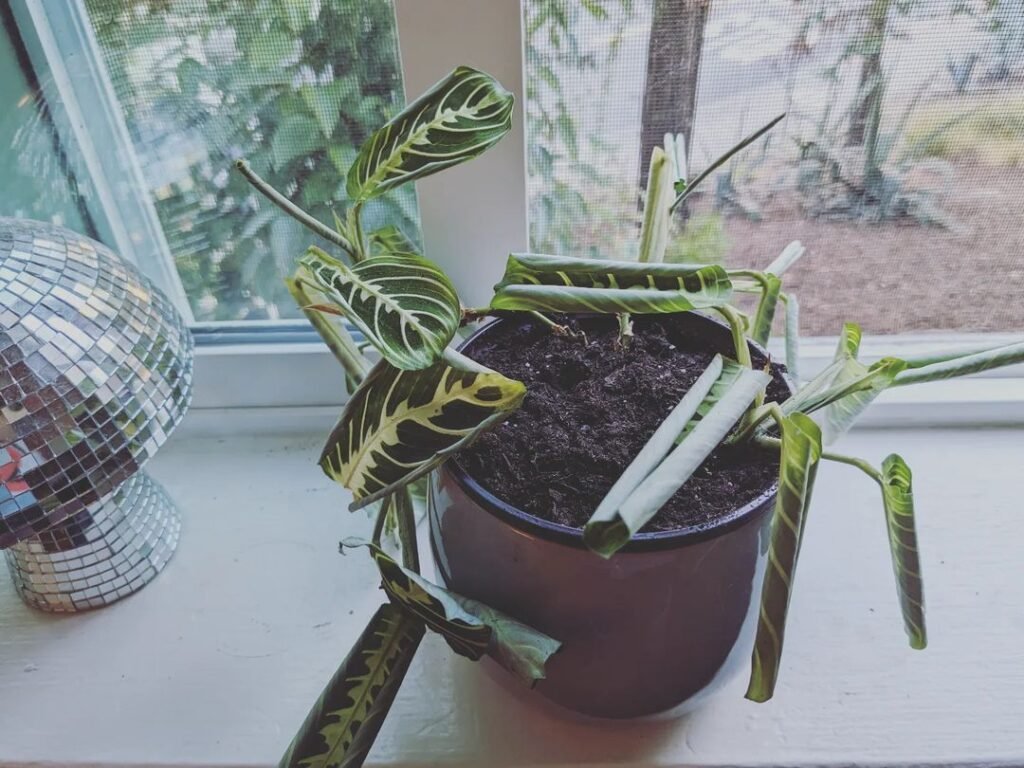Discover how to care for the beautiful lemon lime maranta (prayer plant) with this comprehensive guide. Learn about its light, water, humidity, and temperature needs, as well as repotting, propagation, and troubleshooting tips. Keep your tropical beauty thriving with these easy-to-follow instructions.

The lemon lime maranta, also known as the prayer plant, is a beautiful and unique houseplant that’s sure to add some flair to your home. With its distinctive foliage that folds up at night (hence the nickname “prayer plant”), this tropical beauty is not only eye-catching but also relatively easy to care for. In this guide, we’ll cover everything you need to know to keep your lemon lime maranta thriving.
Light Requirements

The lemon lime maranta prefers bright, indirect light. Direct sunlight can scorch its leaves, so it’s best to keep it in a spot that gets plenty of bright, filtered light. An east or west-facing window is ideal. If you notice the leaves starting to fade or lose their vibrant colors, it could be a sign that the plant isn’t getting enough light. You can try moving it to a brighter spot or supplementing with a grow light.
Watering Needs

Like most tropical plants, the lemon lime maranta likes consistently moist (but not soggy) soil. During the spring and summer, when the plant is actively growing, aim to keep the soil evenly moist. Allow the top inch or two of soil to dry out before watering again. In the winter, when growth slows down, you can let the soil dry out a bit more between waterings. However, avoid letting the plant sit in water, as this can lead to root rot.
When watering, use room-temperature water and be sure to water thoroughly, ensuring that the moisture reaches the bottom of the pot. You can also set the pot on a tray filled with pebbles and water, which will help increase humidity levels around the plant.
Humidity and Temperature

As a tropical plant, the lemon lime maranta thrives in high humidity environments. Ideally, you’ll want to maintain a humidity level of 50% or higher. If your home is particularly dry, you can increase humidity by misting the leaves regularly, using a pebble tray, or investing in a small humidifier.
In terms of temperature, the lemon lime maranta prefers warm conditions between 65°F and 80°F (18°C and 27°C). Avoid placing it near drafty windows or doors, as sudden temperature changes can stress the plant. Additionally, keep it away from heating vents or air conditioning units, which can dry out the air and soil.
Soil and Repotting

The lemon lime maranta does best in a well-draining potting mix designed for houseplants. You can find premixed options at your local nursery or garden center, or you can create your own blend by mixing equal parts peat moss, perlite, and vermiculite.
When it comes to repotting, the general rule of thumb is to do it every one to two years, or when the plant becomes rootbound (roots start to grow out of the drainage holes or circle the inside of the pot). Choose a pot that’s only one or two inches larger than the current one, as maranta plants prefer to be slightly rootbound.
Pruning and Propagation

The lemon lime maranta doesn’t typically require a lot of pruning, but you can remove any dead or damaged leaves as needed. If the plant starts to look leggy or sparse, you can give it a light pruning to encourage bushier growth.
Propagating the lemon lime maranta is relatively easy and can be done through division or stem cuttings. To propagate through division, carefully remove the plant from its pot and use a clean, sharp knife or pruning shears to separate the rootball into sections, ensuring that each section has a few healthy stems and roots. Replant the divisions in fresh potting mix.
For stem cuttings, use a clean, sharp knife or scissors to take a 4-6 inch cutting from a healthy stem, just below a node (where the leaf meets the stem). Remove the lower leaves and place the cutting in a well-draining potting mix or a jar of water. Once roots have formed, you can transplant the cutting into its own pot.
Common Issues and Troubleshooting

Even with proper care, the lemon lime maranta can sometimes encounter a few issues. Here are some common problems and how to address them:
- Yellow or Curling Leaves: This can be a sign of overwatering, underwatering, or low humidity. Check the soil moisture levels and adjust your watering schedule accordingly. If the problem persists, consider using a humidifier or pebble tray to increase humidity.
- Brown or Crispy Leaf Edges: This is often caused by low humidity or dry air. Increase humidity levels around the plant by misting regularly or using a humidifier.
- Leggy or Sparse Growth: If your maranta is stretching towards the light or looking sparse, it may not be getting enough bright, indirect light. Move it to a brighter spot or supplement with a grow light.
- Pests: Mites, mealybugs, and spider mites can sometimes infest the lemon lime maranta. Isolate the plant and treat it with an insecticidal soap or neem oil solution, following the product instructions carefully.
With the right care and attention, your lemon lime maranta will thrive and add a touch of tropical flair to your home. Remember to provide bright, indirect light, consistent moisture, and high humidity, and your prayer plant will reward you with its stunning foliage for years to come.
Pingback: Philodendron Verrucosum Care Guide -
Pingback: How to Grow and Care for Golden Goddess Philodendron
Pingback: Cucumbers Types List with Pictures & Tips -
Pingback: Zinnias Flower: Top 10 Varieties for Colorful Gardens
Pingback: Fragrant Orchids : Essential Care Tips for Aromatic Blooms